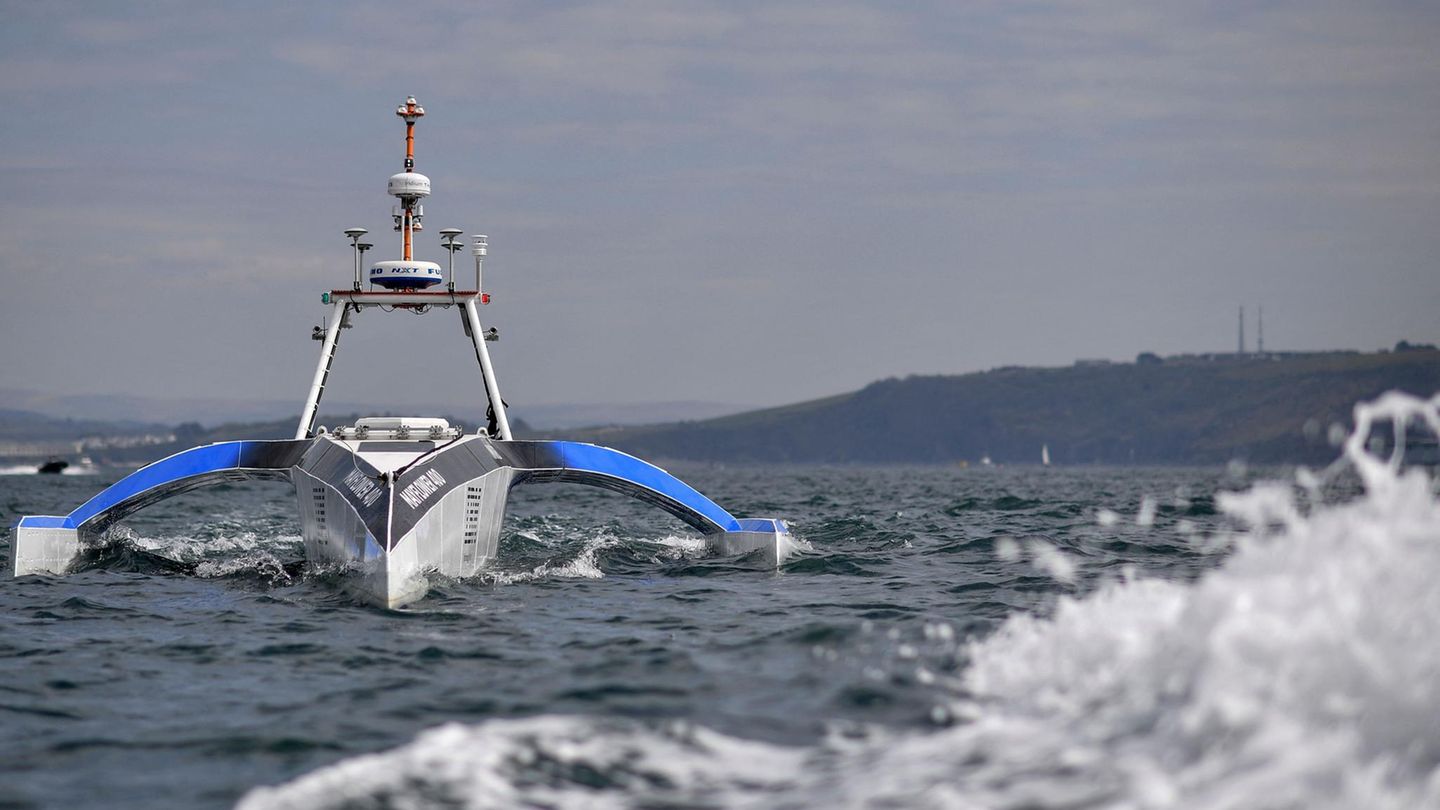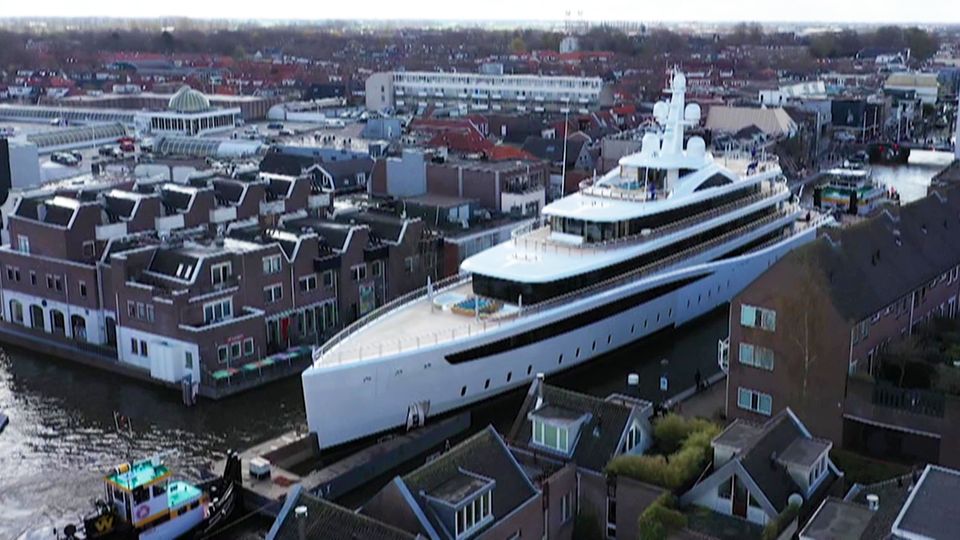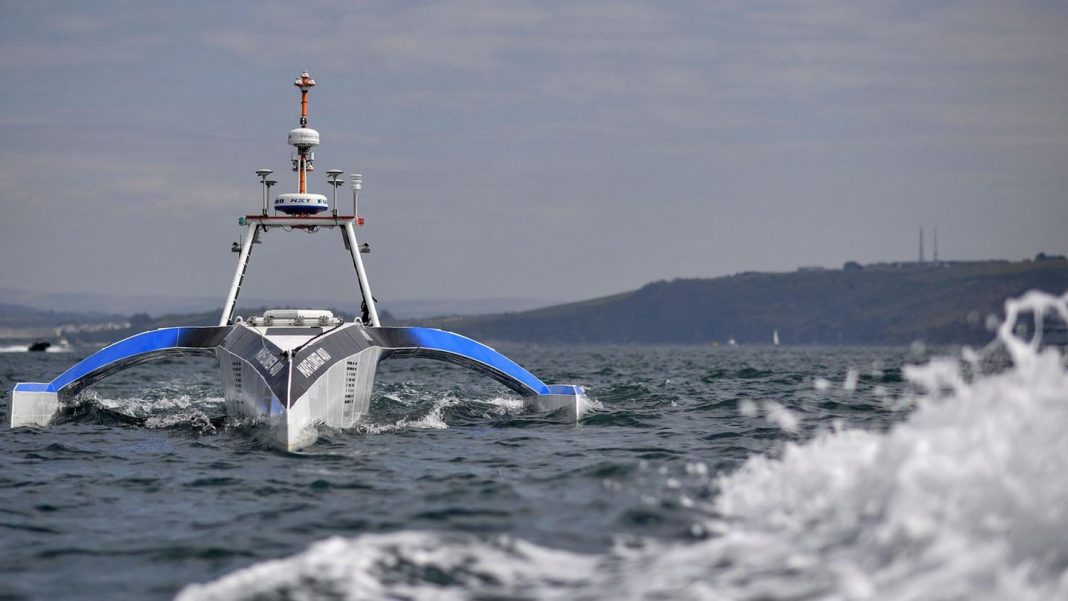Technology
Artificial Intelligence: First unmanned ship to cross the Atlantic

The” Mayflower 400 ” is scheduled to depart for its spectacular ride in mid-May
© Ben Stansall / AFP
The” Mayflower 400 ” could soon be the first ship to sail without a crew. On its maiden voyage from England to America, the ship, controlled by artificial intelligence, has only technology on board instead of passengers.
If the weather is right, shipping history will be written on 15 May in Plymouth, England: an autonomous ship will then set off from England towards America for its maiden voyage across the Atlantic.
The research vessel bears the name “Mayflower 400″, an allusion to the famous emigrant sailing ship that brought the” Pilgrim Fathers ” to America in 1620. However, the high-tech ship powered by artificial intelligence has only the name and the route in common with the two-master from the 17th century.
No more people on board
No passenger will be on Board when the “Mayflower 400” leaves the port of Plymouth. Instead of a crew, the Trimaran has installed a whole lot of technology below deck. An artificial intelligence takes on the role of captain during the journey. On its three-week journey from England to America, the ship, equipped with solar panels and robot rudders, examines the pollution of the sea, analyzes plastic in the water and tracks down marine mammals.
Rosie Lickorish of IBM, the IT group involved in the construction of the project, explains the advantages of a ship without a crew: “A ship without people on board allows scientists to expand their field of observation.” Brett Phaneuf of the organization ProMare, one of the initiators of the project, emphasizes the immense benefits of the ship to combat global warming. After all, the oceans have the “strongest influence” on the global climate.
Unmanned seafaring has some advantages
Whether the ship will actually depart on 15 May is not yet certain. The start has already been postponed due to bad weather conditions. If the ship leaves this time despite strong waves, there is a decisive advantage compared to manned shipping: “On the journey, no one on board will be bored, tired or ill. So it can last as long as it is necessary for science,” says Phaneuf in the port of departure.
Although the “Mayflower 400” will be the first unmanned ship in history to find its way across the Atlantic completely autonomously, a team from the mainland will monitor the ship around the clock for safety.
Artificial intelligence needs Training
The project, funded internationally by countries such as India, Switzerland and the USA, cost around one million dollars (820,000 euros). The boat builders needed a total of one year to complete the 15-metre-long and nine-tonne boat. It took the technicians considerably longer to develop the so-called “Smart Captain”, the artificial intelligence on board. Using thousands of photos, the computer below deck had to learn to spot obstacles at sea. During its first deployment at sea, the developers also trained the ship to avoid collisions.

Meanwhile, the ship’s development has reached the point where it can distinguish between “safe and unsafe” maneuvers, says software engineer Ollie Thompson. It is even capable of learning from its own mistakes and correcting them. However, the “Mayflower 400” has not yet been tested in rough seas. In simulations, however, she has so far mastered waves up to 50 meters high.
“Mayflower 400” investigates microplastics in the Atlantic Ocean
The artificial intelligence installed in the boat is especially crucial for the scientific experiments of the “Mayflower 400”. “She was trained for hundreds of hours with audio data to detect marine mammals,” says Lickorish. This could provide information on the distribution of the population in the open ocean. Analyses of the chemical composition of the water, measurements of the sea level and the collection of microplastic samples are also part of the tasks of the unmanned ship.


